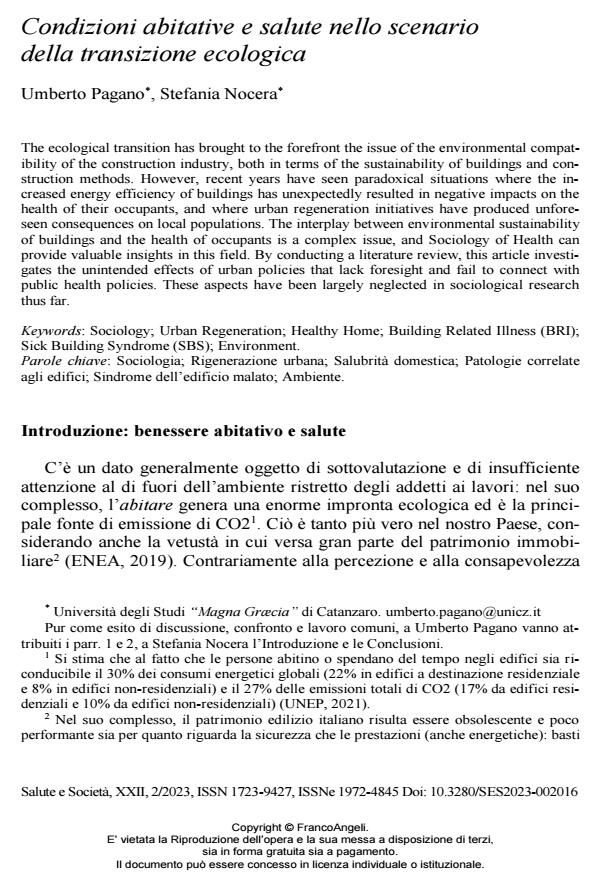Condizioni abitative e salute nello scenario della transizione ecologica
Titolo Rivista SALUTE E SOCIETÀ
Autori/Curatori Umberto Pagano, Stefania Nocera
Anno di pubblicazione 2023 Fascicolo 2023/2
Lingua Italiano Numero pagine 15 P. 181-195 Dimensione file 339 KB
DOI 10.3280/SES2023-002016
Il DOI è il codice a barre della proprietà intellettuale: per saperne di più
clicca qui
Qui sotto puoi vedere in anteprima la prima pagina di questo articolo.
Se questo articolo ti interessa, lo puoi acquistare (e scaricare in formato pdf) seguendo le facili indicazioni per acquistare il download credit. Acquista Download Credits per scaricare questo Articolo in formato PDF

FrancoAngeli è membro della Publishers International Linking Association, Inc (PILA)associazione indipendente e non profit per facilitare (attraverso i servizi tecnologici implementati da CrossRef.org) l’accesso degli studiosi ai contenuti digitali nelle pubblicazioni professionali e scientifiche
The ecological transition has brought to the forefront the issue of the environmental compati-bility of the construction industry, both in terms of the sustainability of buildings and con-struction methods. However, recent years have seen paradoxical situations where the increased energy efficiency of buildings has unexpectedly resulted in negative impacts on the health of their occupants, and where urban regeneration initiatives have produced unforeseen conse-quences on local populations. The interplay between environmental sustainability of buildings and the health of occupants is a complex issue, and Sociology of Health can provide valuable insights in this field. By conducting a literature review, this article investigates the unintended effects of urban policies that lack foresight and fail to connect with public health policies. These aspects have been largely neglected in sociological research thus far.
Parole chiave:Sociologia; Rigenerazione urbana; Salubrità domestica; Patologie correlate agli edifici; Sindrome dell’edificio malato; Ambiente.
Umberto Pagano, Stefania Nocera, Condizioni abitative e salute nello scenario della transizione ecologica in "SALUTE E SOCIETÀ" 2/2023, pp 181-195, DOI: 10.3280/SES2023-002016